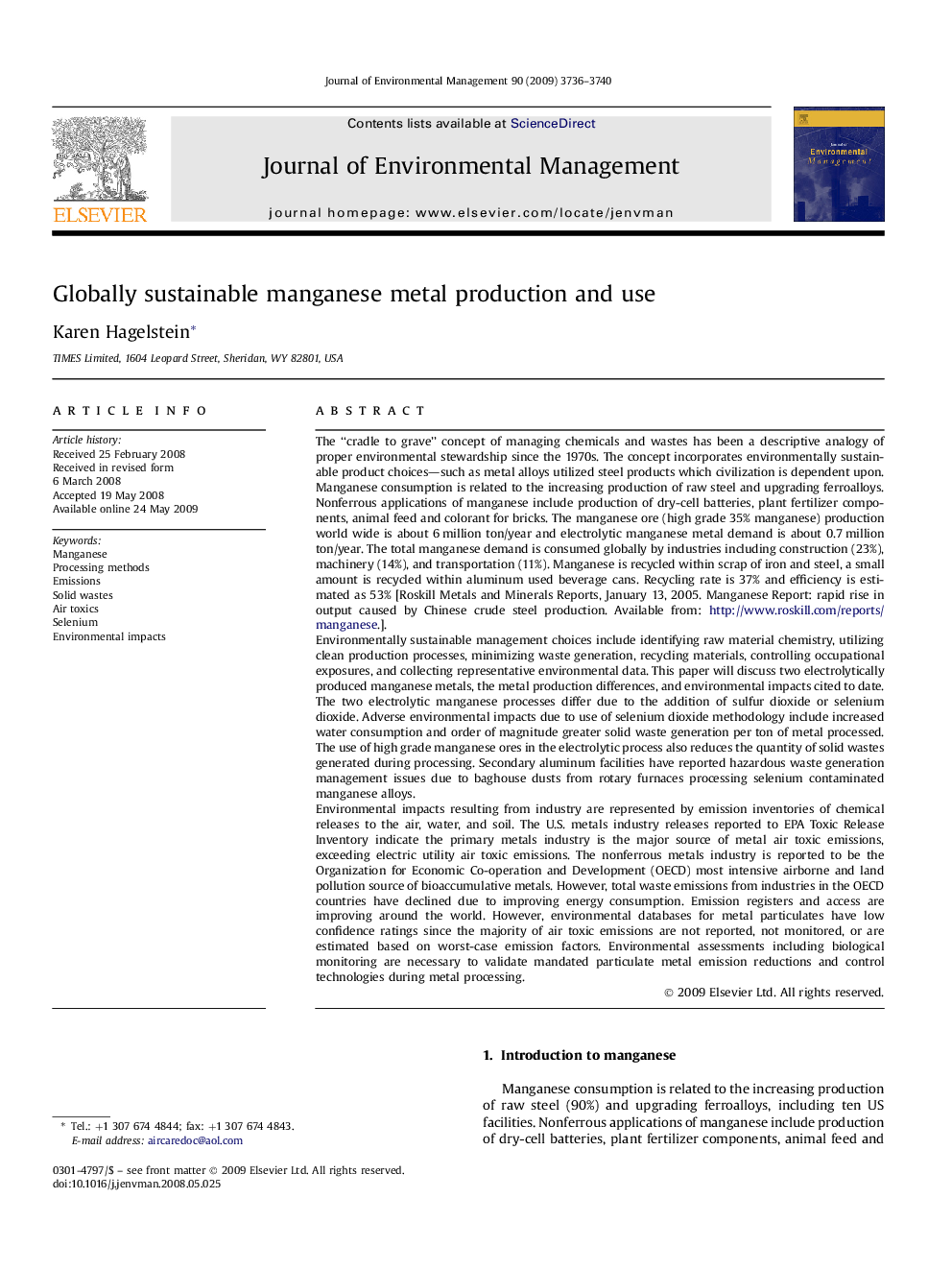| Article ID | Journal | Published Year | Pages | File Type |
|---|---|---|---|---|
| 1057942 | Journal of Environmental Management | 2009 | 5 Pages |
The “cradle to grave” concept of managing chemicals and wastes has been a descriptive analogy of proper environmental stewardship since the 1970s. The concept incorporates environmentally sustainable product choices—such as metal alloys utilized steel products which civilization is dependent upon. Manganese consumption is related to the increasing production of raw steel and upgrading ferroalloys. Nonferrous applications of manganese include production of dry-cell batteries, plant fertilizer components, animal feed and colorant for bricks. The manganese ore (high grade 35% manganese) production world wide is about 6 million ton/year and electrolytic manganese metal demand is about 0.7 million ton/year. The total manganese demand is consumed globally by industries including construction (23%), machinery (14%), and transportation (11%). Manganese is recycled within scrap of iron and steel, a small amount is recycled within aluminum used beverage cans. Recycling rate is 37% and efficiency is estimated as 53% [Roskill Metals and Minerals Reports, January 13, 2005. Manganese Report: rapid rise in output caused by Chinese crude steel production. Available from: http://www.roskill.com/reports/manganese.].Environmentally sustainable management choices include identifying raw material chemistry, utilizing clean production processes, minimizing waste generation, recycling materials, controlling occupational exposures, and collecting representative environmental data. This paper will discuss two electrolytically produced manganese metals, the metal production differences, and environmental impacts cited to date. The two electrolytic manganese processes differ due to the addition of sulfur dioxide or selenium dioxide. Adverse environmental impacts due to use of selenium dioxide methodology include increased water consumption and order of magnitude greater solid waste generation per ton of metal processed. The use of high grade manganese ores in the electrolytic process also reduces the quantity of solid wastes generated during processing. Secondary aluminum facilities have reported hazardous waste generation management issues due to baghouse dusts from rotary furnaces processing selenium contaminated manganese alloys.Environmental impacts resulting from industry are represented by emission inventories of chemical releases to the air, water, and soil. The U.S. metals industry releases reported to EPA Toxic Release Inventory indicate the primary metals industry is the major source of metal air toxic emissions, exceeding electric utility air toxic emissions. The nonferrous metals industry is reported to be the Organization for Economic Co-operation and Development (OECD) most intensive airborne and land pollution source of bioaccumulative metals. However, total waste emissions from industries in the OECD countries have declined due to improving energy consumption. Emission registers and access are improving around the world. However, environmental databases for metal particulates have low confidence ratings since the majority of air toxic emissions are not reported, not monitored, or are estimated based on worst-case emission factors. Environmental assessments including biological monitoring are necessary to validate mandated particulate metal emission reductions and control technologies during metal processing.
